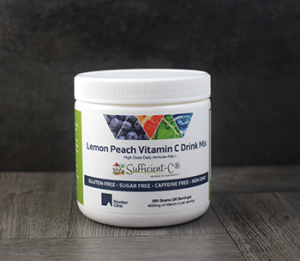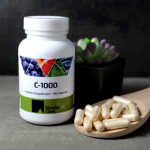Understanding Vitamin D3/K2
By: Dr. Ron Hunninghake, MD
The sun sets further and further into the south every fall, leading into winter. As a result, the days get shorter, the sun’s rays diminish in duration and intensity, and we begin to see D3 — “the sunshine vitamin” — blood levels drop in sun-exposed mammals. That imperceptible signal results in profound behavioral changes easily observed in foxes, bears, and many other land roaming creatures. Their activity slows while their foraging increases. They are fattening up their calorie stores for the long winter’s hibernation.
With the advent of spring, the summer sun’s brighter Ultraviolet B (UVB) rays once again bathe their skin and fur. D3 is synthesized from the photo-transformation of cholesterol, slowly absorbing into the bloodstream through the liver and kidneys, where it is finally converted into the activated form of vitamin D.1 Rising levels of activated D signal renewed growth, heightened metabolic activity, better immunity, sharpened reproductive instincts, and accelerated tissue repair and regeneration. Rising vitamin D levels have been synonymous with health, healing, and vitality in our mammalian relatives for millions of years.
Vitamin D and Rickets Prevention
By contrast, medical school teaches doctors that the only role of vitamin D is to prevent rickets, a softening and weakening of bones in children, usually due to inadequate vitamin D levels. Thus, the medical standard for fat-soluble vitamin D in children is limited to 400 IU (International Units) per day; for adults it is 600 IU.2 This low dose is premised on an unfounded fear that excessive intakes of fat-soluble vitamin D could cause the build-up of calcium in the body’s fatty tissues, medically referred to as hypercalcinosis. Hypercalcinosis results in the formation of kidney stones, calcified arteries, calcium in breast tissues, and other manifestations of excessive calcium in the urine, blood, and body tissues.3 That fact sheds a whole new light on why many “old school” vitamin D researchers are wary of patients getting carried away with their ultra-high doses of vitamin D3. Keep in mind that a medical prescription for vitamin D buys you a very high dose (50,000 IU) of D2, which can cause calcium build-up.4
Is Vitamin D3 Toxic?
Though relatively rare, toxicity and sensitivity issues can arise in the human consumption of both vitamin D2 and vitamin D3. Of the two, D3 is the safest, which allows it to be sold over the counter. Vitamin D toxicity and, more importantly, deficiency can be avoided by having your 25(OH)D level measured once a year and keeping it around 60 -100 ng/mL for optimal health.
Keep in mind that we evolved from primitive, naked humans who lived near the equator and who, like swimming pool lifeguards, regularly synthesized around 10,000 IU of D3 daily from the sun.5
A noted Canadian vitamin D researcher, Dr. Reinhold Vieth, has studied the question of D3 toxicity extensively and states categorically that there exists no published evidence for toxicity in adults taking 10,000 IU of a daily D3 supplement.6 Children can safely take around 1,000 IU for every 25 pounds of body weight.7
Health Conditions Impacted by Vitamin D Levels
One hundred twenty-five health conditions are carefully linked to vitamin D research and other publications. For example, more than 850 links to research8 show that vitamin D is exceptionally beneficial in preventing COVID-19. https://vitamindwiki.com/ << add this as a QR code
Here are 35 of the 125 health conditions covered by VitaminDWiki:
- Anaphylaxis
- Anemia
- Asthma
- Autism
- Breast Cancer
- Cervical Cancer
- COPD
- Colorectal Cancer
- Congestive Heart Failure
- Coronary Artery Disease
- Dental Caries
- Depression
- Endometrial Cancer
- Esophageal Cancer
- Fibromyalgia
- Gastric Cancer
- HIV and AIDS
- Hypertension
- Inflammatory Bowel Disorder
- Influenza
- Lung Cancer
- Melanoma
- Multiple Myeloma
- Multiple Sclerosis
- Osteopenia
- Ovarian Cancer
- Pancreatic Cancer
- Parkinson’s Disease
- Periodontal Disease
- Pneumonia
- Preeclampsia
- Prostate Cancer
- Renal Cancer
- Sepsis and Septicemia
- Type II Diabetes
Vitamin D3 and Vitamin K2 a Fail-safe Combo
The genius of this combo begins with proper respect for D3’s function of powerfully enhancing calcium absorption. While calcium is a necessary mineral for good health, a large body of recent research has shown that excessive calcium intake, especially calcium supplements, can be harmful to the body. The additional calcium must be correctly utilized, or it can show up in the wrong places and cause disease. Vitamin D alone can lead to excessive calcium uptake, tissue deposition, and interference with normal cardiac and renal function. By conscientiously using vitamin K2 in conjunction with D3, calcium is absorbed and directed toward healthy functions in the body.9
What Does Vitamin K2 Do?
Vitamin K activates several essential proteins in the body. Henrick Dam, a Danish researcher, discovered vitamin K in 1939 (and won the Nobel Prize for his discovery in 1943). Because the Danish word for blood clotting was koagulation, Dam named the molecule vitamin K. Vitamin K1 is essential for the functioning of thirteen proteins involved in blood clotting.10
Vitamin K2 has another role to play. It will gather excessive calcium in the bloodstream and deposit it in your bones and teeth, which can aid in the prevention of coronary and carotid artery calcification.11 This explains the 50+% reduction in heart disease in regular vitamin K2 users.12 The same protein may also prevent bone spurs and calcium deposits in breast tissue and reduce the risk of osteoporosis and dental caries. Vitamin K2 is thus helping us age better with “hard bones and soft arteries,” … not the other way around.
Finally, like vitamin D3, strong evidence demonstrates vitamin K’s fantastic ability to reduce cancer risk.13 For example, men taking vitamin K2 mk7 (a naturally occurring longer-acting form of K2) at 45 mcg a day can reduce their risk of prostate cancer by 60%!14
D3/K2 – Safety First
As we explore the healing power of higher doses of vitamin D3 at the Riordan Clinic, we have found it prudent to partner the safety and effectiveness of this dynamic duo. Therefore, for every 5,000–10,000 units of D3 being recommended and tested for, we recommend 100 mcg of K2 mk7 to be sure and prevent the inappropriate calcification that higher doses of D3 alone could rarely cause.
REFERENCES:
- Bikle DD. Vitamin D: Production, Metabolism and Mechanisms of Action. [Updated 2021 Dec 31]. In: Feingold KR, Anawalt B, Boyce A, et al., editors. Endotext [Internet]. South Dartmouth (MA): MDText.com, Inc.; 2000. Available from: https://www.ncbi.nlm.nih.gov/books/NBK278935/
- Vitamin D: Fact sheet for health professionals. Office of Dietary Supplements. https://ods.od.nih.gov/factsheets/VitaminD-HealthProfessional/. Accessed May 18, 2022.
- Zeratsky, K. (2022, March 22). Vitamin D toxicity: What if you get too much? Mayo Clinic. Retrieved May 18, 2022, from https://www.mayoclinic.org/healthy-lifestyle/nutrition-and-healthy-eating/expert-answers/vitamin-d-toxicity/faq-20058108
- Cerner Multum. (2021, March 11). Vitamin D2 uses, Side Effects & Warnings. Drugs.com. Retrieved May 18, 2022, from https://www.drugs.com/mtm/vitamin-d2.html
- Health Discoveries. (n.d.). What vitamin D dosage do I need? how much sun do I need? What Vitamin D Dosage Do I need? How Much Sun Do I Need? Retrieved May 18, 2022, from https://www.healthdiscoveries.net/vitamin-D.html
- Vieth, R. (2007), Vitamin D Toxicity, Policy, and Science. J Bone Miner Res, 22: V64-V68. https://doi.org/10.1359/jbmr.07s221
- Dalle Carbonare L, Valenti MT, Del Forno F, Caneva E, Pietrobelli A. Vitamin D: Daily vs. Monthly Use in Children and Elderly-What Is Going On?. Nutrients. 2017;9(7):652. Published Jun 24, 2017. doi:10.3390/nu9070652
- VitaminDWiki. (n.d.). Retrieved May 18, 2022, from https://vitamindwiki.com/
- Belanger, G. (2018, March 17). Reversing calcification and the miracle of vitamin K2. healthfully. Retrieved May 18, 2022, from https://healthfully.net/2018/03/17/reversing-calcification-and-the-miracle-of-vitamin-k2/
- Harvard T.H. Chan. (2019, July 2). Vitamin K. The Nutrition Source. Retrieved May 19, 2022, from https://www.hsph.harvard.edu/nutritionsource/vitamin-k/
- Mladěnka, P., Macáková, K., Kujovská Krčmová, L., Javorská, L., Mrštná, K., Carazo, A., Protti, M., Remião, F., Nováková, L., & OEMONOM researchers and collaborators (2022). Vitamin K – sources, physiological role, kinetics, deficiency, detection, therapeutic use, and toxicity. Nutrition reviews, 80(4), 677–698. https://doi.org/10.1093/nutrit/nuab061
- Maresz K. (2015). Proper Calcium Use: Vitamin K2 as a Promoter of Bone and Cardiovascular Health. Integrative medicine (Encinitas, Calif.), 14(1), 34–39.
- Lamson, D. W., & Plaza, S. M. (2003). The Anticancer Effects of Vitamin K. Alternative Medicine Review : A Journal of Clinical Therapeutic, 8(3), 303–318.
- The Incredible Anticancer Benefits of Vitamin K: CHIPSA hospital: Gerson Therapy Center Cancer treatment. CHIPSA Hospital: Gerson Therapy Center Cancer Treatment | Advanced Cancer Treatment and Research Medical Center. (2017, January 23). Retrieved May 18, 2022, from https://chipsahospital.org/the-incredible-anticancer-benefits-of-vitamin-k/





